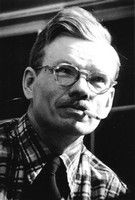Kenneth Stubbs |
 |
|
Retro: Stubbs, leading American cubist, on displayKenneth Stubbs was a seminal figure among a small group of American cubists in the 1920s and '30s who, art professor Robert Metzger says, successfully adapted cubism into his own style. Working in Provincetown may have had something to do with it. Stubbs came to Provincetown in 1931 after graduating from the Corcoran School of Art in Washington, D.C., beginning a long relationship with the art community here. Influenced in his early years by cubists Pablo Picasso, Juan Gris and Georges Braque, Stubbs studied with E. Ambrose Webster as a part of Webster's first Modern School of Art in Provincetown, and went on to paint in town over the next three decades. He died in 1967, but his spirit lives on through his work. What Stubbs saw and learned here can be viewed in a retrospective if his career that runs through May 20 at the Residences at Seashore Point. This inaugural exhibition in Seashore Point's Hatches Harbor Room is a collaboration between Seashore Point and the Boston-based ACME Fine Art gallery. This is the fifth solo offering of Kenneth Stubbs's artwork by ACME. Gallery director David Cowan curates the show, which features paintings in casein and watercolor whose subjects include Provincetown and the surrounding area. Stubbs's ties to this town run deep. His paintings make viewers feel as if they are standing in Provincetown in the middle of the last century. Indeed, they are so iconic the Provincetown Art Association and Museum used one for the cover of its catalogue "A Century of Inspiration." Provincetown informed the direction of Stubbs's work in many ways. Here he found an empathetic art community that, according to his widow, Miriam, offered a sense of community and the worth of each person. "The light is of course always a factor for anyone who paints here," she says. "But there's also the freedom to express yourself." Stubbs found a kindred inquisitive spirit in Webster (whose studio he swept to help cover the cost of tuition). Stubbs and Webster were interested in the golden section -- a mathematical ratio of length and width in paintings -- that runs through the history of art. The two men would take a masterpiece and analyze it to see if the golden section had been used. When they constructed their paintings, they used the golden section in the planning. "This was an independent mind," Mrs. Stubbs says of her late husband. "There are artists who paint very competently and pleasingly, and then there are artists who push the boundaries." His concern with the golden section and with angular, flat panes that express motion is "not abstract impressionism, it's more intellectual," she adds. "I've always regarded the watercolors as his poems." After graduating from art school, Stubbs continued teaching at the Corcoran, spending nearly every summer in Provincetown from 1931 until his death. "He really loved this place," Mrs. Stubbs says. "He was very fond of the art association. He had no money but had managed to get himself a life membership before I met him." He became a Beachcomber in 1938, and the first endowed Fine Arts Work Center scholarship was established in Stubbs's name by his sister, Dorothy Stubbs Neyman. Stubbs brought Miriam to Provincetown when she was pregnant with her first child, introducing her to artist friends, including Fritz Fuglister, Bruce McKain and Philip Malicoat. She saw immediately how much he enjoyed his circle of friends and his work. They rented a place in 1959, and not long after bought a house on Bradford Street. The family still has that house, but Miriam moved to Seashore Point a year ago. There is an artist community within the building, she says, and people who keep up with the art world. Sheila McGuinness, director of resident services at Seashore Point, says the facility is inspired by Provincetown's arts community, and has several artists living in its residences. "We already collaborate with many Provincetown organizations -- the COA, the library, PAAM, and the Bakker Project, for example," McGuinness says. "By hosting this show, Seashore Point is sharing a unique exhibition with the people of Provincetown." Susan Blood, Cape Codder, Friday, April 29, 2016, p. B3
|
See also: Show Announcement Works Shown Provincetown Banner Article |